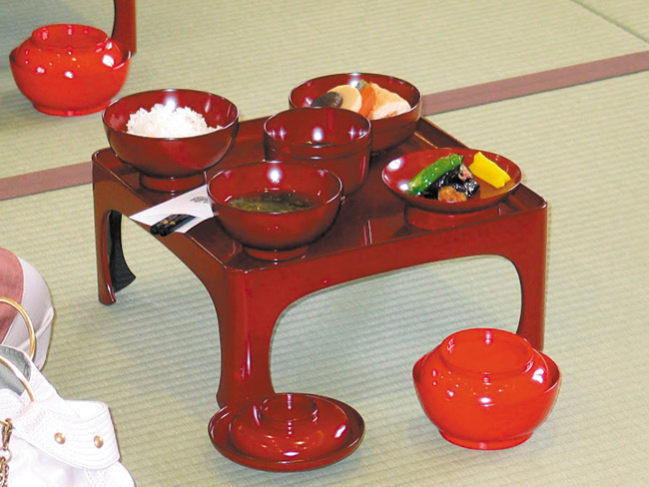Lacquer From Sap To Treasure
On a trip to Myanmar (Burma) several years ago, while visiting my umpteenth stupa, I was once again bombarded by street children selling their wares. They were holding up glistening black bowls that were beautifully painted. I wasn’t sure what I’d do with them, but having a soft spot for sweet kids with beautiful smiles, I bought some of their lacquer pieces.
Only today, while speaking with East-West Center curator Michael Schuster on the gallery’s lacquer exhibit, “Living Lacquer Traditions” (on display through Sept. 7), have my little keepsakes taken on significantly greater import.
mw-art-070914-lacquer1
“We are displaying lacquerware from all over Asia, but we’re really emphasizing Burmese and Japanese lacquer-ware because that is where the highest levels of the art form can be found right now,” says Schuster. My own pieces are handmade and therefore took some effort, but Schuster says the 7,000-plus-year-old lacquer process is “extraordinarily time consuming and takes a level of expertise that is phenomenal,” so that some elaborate pieces take more than a year to be completed and often are ornately decorated.
Artisans begin with a base, like a bamboo basket (Myanmar) or wood substrate (Japan) and then cover it in up to 40 or more layers of sap from trees of the cashew and sumac families unique to particular regions throughout Asia. Each coat is dried and polished into a hard, shiny, water-resistant surface. Pieces are used functionally as with children’s toys, dinner bowls or tea sets, and others are purely aesthetic, incised with intricate designs using gold, or in the case of Japan, quail egg and abalone shells. While wood and bamboo are the most common substrates, the exhibit showcases more than 100 pieces done on a variety of surfaces from jewelry to leather and metal. Lacquerware has enjoyed significance throughout history, yet being so labor intensive, it is an increasingly rarified art form.
Why Asia and not the rest of the world? Asia has the right kind of trees, and while several different varieties make for various kinds of lacquer, the pieces are also distinct to particular Asian regions based on the shape of the piece and cultural symbols and aesthetic embellishments used ― for instance, phoenixes and dragons in China, chrysanthemums and cherry blossoms in Japan, and mythical animals and Buddhist Jataka-informed art or texts in Myanmar.
“If you’re interested in detail and perceiving what (living masters are doing with lacquer even today), you can really spend some time here,” notes Schuster, adding, “I often hear from people, ‘Wow, I didn’t realize what went into all these pieces that my grandparents have.'”
In conjunction with the exhibit, East-West Center sponsors a series of illustrated talks (944-7177, arts.eastwestcenter.org) in August and a film coming up July 13 on handicrafts found in six countries along the Mekong River. August activities include local teenagers hosting a tea ceremony using lacquer instruments, a talk with a filmmaker who featured Burmese lacquer as one of his subjects, and a guest speaker from the Honolulu Museum of Art who will discuss the museum’s lacquer painting collection.
ALSO SHOWING
Celebrate Korean Culture
Some say Hawaii is like a salad or a soup, comprised of a kaleidoscope of ethnic groups that each maintain their distinct flavor. No matter the metaphor used, July 12 marks 13 years of celebrating Korean culture at the annual Korean Festival, only this year renovations at Kapiolani Park have relocated the festival to Magic Island (10 a.m.-9 p.m., koreanfestivalhi.com). The festival manifests in a bustling explosion of art exhibits, music, food and traditional fan and drum dances performed by local dance organizations.
“The highlight of the day,” says co-chair Minnie Ko, “is in the evening when we have a K-pop group coming in for a one-and-a-half hour concert.” It will be M.Pire’s ― a boy band that’s rapidly gaining popularity in Korea ― first time performing in Hawaii.
Additional entertainment includes the performance of a traditional wedding ceremony, cooking demonstrations, sports activities, a song contest, kim chi eating contest and talent show. A cultural tent will feature an authentic Korean wedding display of stunningly elaborate costumes, and the Korean Artists Association of Hawaii will be on hand to paint Korean face masks at a keiki booth.
“We have a lot of new art and cultural exhibits this year,” says Ko, “So come on down to Magic Island and visit.”






